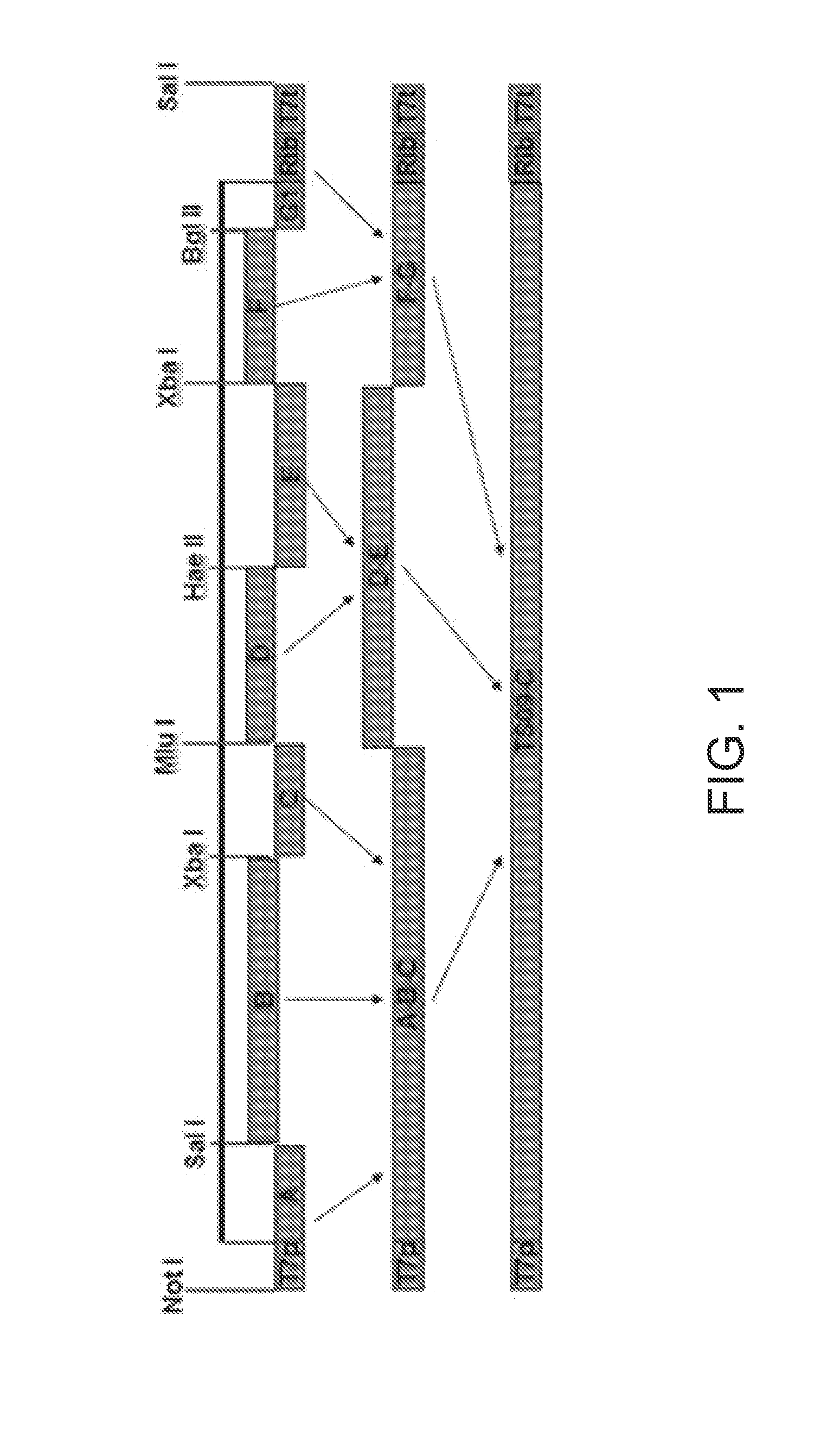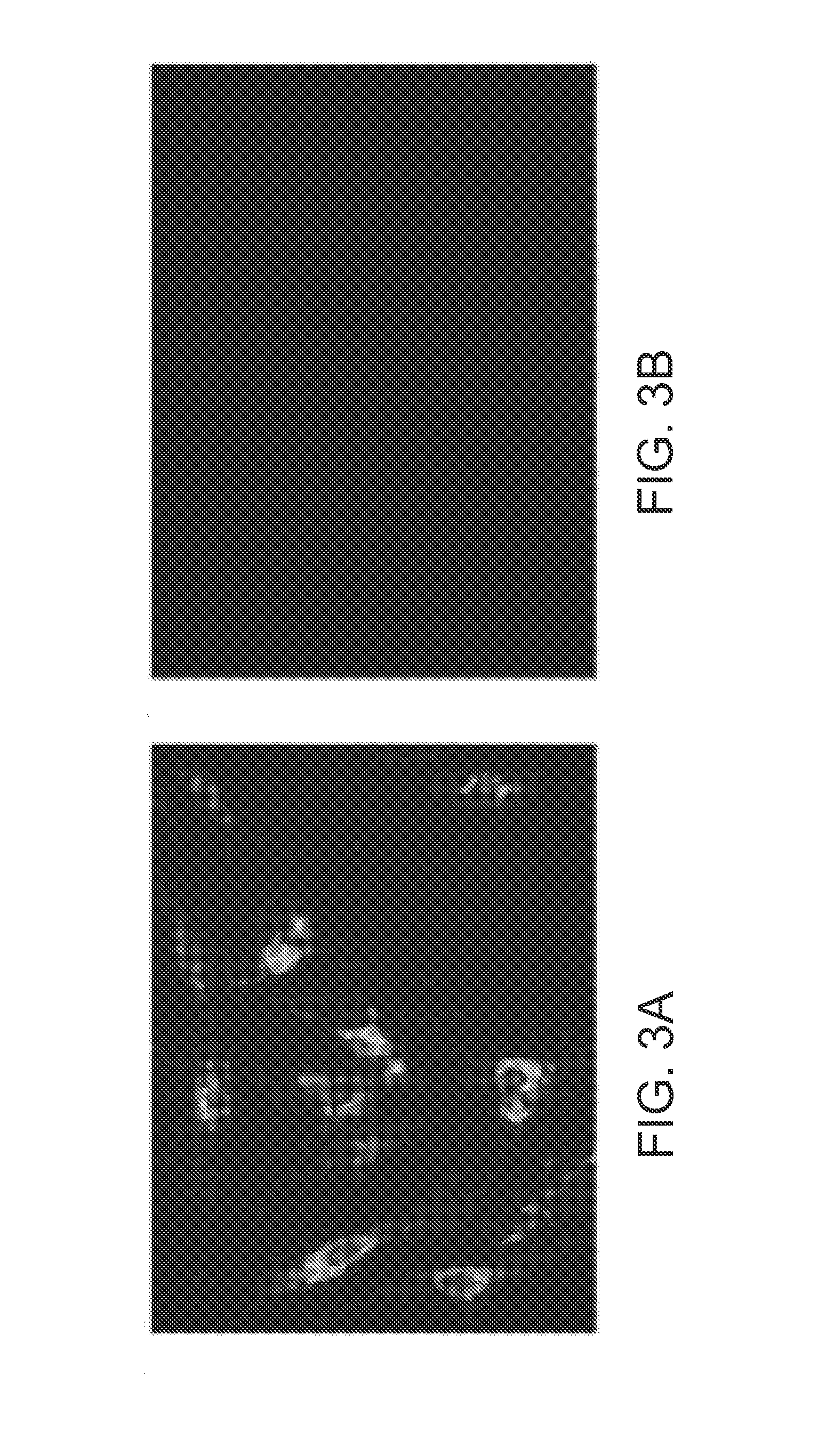Heat-resistant newcastle disease virus live vaccine vector system and use thereof
a technology of live virus and vector system, which is applied in the field of live virus vector system, can solve the problems of increasing economic losses in the world, increasing the complexity of prevention and control of nd, and atypical nds constantly emerging, so as to reduce the transportation cost, the effect of reducing the cost of transportation and increasing the group infection ra
- Summary
- Abstract
- Description
- Claims
- Application Information
AI Technical Summary
Benefits of technology
Problems solved by technology
Method used
Image
Examples
embodiment 1
of a Heat-Resistant NDV Live Vaccine Vector System
[0044]A heat-resistant NDV live vaccine vector system is formed by a transcription plasmid capable of expressing a complete genomic sequence of a heat-resistant NDV strain, three helper plasmids capable of expressing NP, phosphoprotein, and large polymerase protein of a heat-resistant NDV strain, and host cells. Construction of the transcription plasmid and the three helper plasmids are described below.
[0045]1. Construction of the Transcription Plasmid
[0046]A construction strategy of the transcription plasmid is shown in FIG. 1. The top black bar shows the full length genome of TS09-C strain. Each block shows a PCR or cloning segments. The whole genome is separated into 7 segments from A to G. First, a whole genome sequence is amplified through the 7 segments. Of them, a T7 promoter (T7p) sequence is added to the upstream of the segment A, and a hepatitis D virus ribozyme sequence (Rib) and a T7 terminator (T7t) sequence are added to...
embodiment 2
Recombinant Heat-Resistant NDV Strain Using a Heat-Resistant NDV Live Vaccine Vector System
[0061]A transcription plasmid and helper plasmids in a heat-resistant NDV live vaccine vector system are used to cotransfect host cells allowing replication of a heat-resistant NDV strain. The cotransfected host cells are cultured and the cell culture is collected, and used for sub-culture on the host cells or SPF chick embryos for proliferation, thereby obtaining a recombinant heat-resistant NDV strain.
[0062]1. Artificially Rescuing a Recombinant Heat-Resistant NDV Strain
[0063]BHK-21 cells are adjusted to an optimal state, and seeded to a 6-well plate (cell density of 4×105 cells / ml). The cells grow to 80-90% confluence after sub-culturing for one day. The cell nutrient solution is changed into a Dulbecco's modified Eagle medium (DMEM) culture medium with 2% new-born calf serum. The BHK-21 cells are infected with a vaccinia virus vTF7-3 at a multiplicity of infection (MOI) of 0.01 for one hou...
embodiment 3
haracteristics of the Recombinant Heat-Resistant NDV Strain
[0068]After the recombinant heat-resistant NDV strain is artificially obtained, biological characteristics of the recombinant virus is tested to determine whether the recombinant heat-resistant NDV strain has the same biological characteristics as the TS09-C parent strain.
[0069]1. Cell Growth Curve of the Recombinant Heat-Resistant NDV Strain
[0070]A diluted virus solution is used to inoculate BHK-21 cells that have grown into a compact monolayer. Supernatants of the cell culture are collected at 6 hours, 12 hours, 24 hours, 48 hours, 72 hours, and 96 hours after the infection, and the virus titer are measured. In one example, a method includes the following steps. The virus solution is 10-fold serial diluted in the range of about 10−1 to 10−8. 100 μl of the solution at each dilution is added to a 96-well plate containing the monolayer of BHK-21 cells. Each dilution includes 5 repeats. After one hour of infection, removing th...
PUM
| Property | Measurement | Unit |
|---|---|---|
| Temperature | aaaaa | aaaaa |
| Time | aaaaa | aaaaa |
| Electrical resistance | aaaaa | aaaaa |
Abstract
Description
Claims
Application Information
 Login to View More
Login to View More - R&D
- Intellectual Property
- Life Sciences
- Materials
- Tech Scout
- Unparalleled Data Quality
- Higher Quality Content
- 60% Fewer Hallucinations
Browse by: Latest US Patents, China's latest patents, Technical Efficacy Thesaurus, Application Domain, Technology Topic, Popular Technical Reports.
© 2025 PatSnap. All rights reserved.Legal|Privacy policy|Modern Slavery Act Transparency Statement|Sitemap|About US| Contact US: help@patsnap.com



